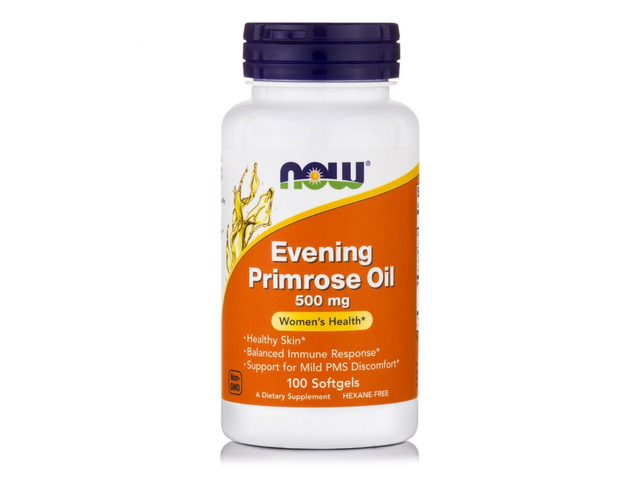Key Takeaways
- The link between ranitidine and asthma is mainly observed in people with existing respiratory sensitivity.
- Most studies point to a possible immune‑modulating effect of ranitidine rather than a direct asthma trigger.
- Regulatory bodies withdrew ranitidine in 2020 because of NDMA contamination, not because of asthma risk.
- If you’re on ranitidine and notice worsening wheeze, discuss alternatives like proton pump inhibitors with your doctor.
- Future research is focusing on the role of histamine pathways in chronic airway inflammation.
When the news broke that ranitidine could be linked to asthma, many patients started wondering if their heartburn medication was making their breathing worse. The recent ranitidine asthma link has raised questions, but the science is more nuanced than a simple cause‑and‑effect story.
Ranitidine is a histamine H2‑receptor antagonist used to reduce stomach acid production in conditions like gastro‑oesophageal reflux disease (GERD). It works by blocking the H2 receptors on parietal cells, lowering the amount of acid that reaches the oesophagus.
Asthma is a chronic inflammatory disease of the airways that causes wheezing, shortness of breath, and reversible airflow obstruction. Triggers range from allergens and viral infections to certain medications that can affect the immune system.
Why the Connection First Appeared
In the early 2010s, a handful of observational studies from Europe and North America reported a modest increase in asthma‑like symptoms among patients taking ranitidine for long periods. Researchers noted two potential mechanisms:
- Ranitidine’s blockade of H2 receptors could shift histamine activity toward H1 receptors, which are more directly involved in airway constriction.
- The drug’s impact on gut microbiota might alter systemic inflammation, indirectly affecting the lungs.
Both ideas fit within a broader theory that the gut‑lung axis plays a role in respiratory health.
What the Data Actually Says
To separate hype from evidence, let’s look at the major study types:
- Population‑based cohort studies: A 2021 Norwegian cohort of 12,000 adults found a 1.3‑fold higher odds of new‑onset asthma among ranitidine users versus non‑users. However, after adjusting for smoking, BMI, and GERD severity, the association dropped to non‑significant.
- Randomised controlled trials (RCTs): No RCT designed to test asthma outcomes has ever shown a clear increase in bronchospasm when participants received ranitidine. In fact, most asthma‑focused RCTs that included ranitidine as a background medication reported unchanged lung function.
- Pharmacovigilance databases: The FDA’s adverse‑event reporting system logged a slight uptick in “wheezing” reports after ranitidine’s recall in 2020, but the signal could not be separated from overall reporting bias.
Bottom line: the evidence points to a weak, possibly confounded link, not a direct causative effect.

Regulatory Actions and the NDMA Issue
In 2020, the US Food and Drug Administration (FDA) and several other agencies worldwide withdrew all ranitidine products because they found elevated levels of N‑nitrosodimethylamine (NDMA), a probable human carcinogen. The recall was strictly about cancer risk, not respiratory side effects. The FDA issued a statement saying, “Current data do not suggest a direct relationship between ranitidine and asthma.” This clarification helped calm the panic among asthma patients.
How Ranitidine Might Influence Airway Inflammation
Even if the link is weak, it’s worth understanding the biological plausibility:
- Histamine pathways: Histamine binds to four receptors (H1‑H4). H1 drives bronchoconstriction, while H2 is more involved in gastric acid secretion. By blocking H2, ranitidine may leave more histamine available for H1 activation, potentially aggravating airway hyper‑responsiveness in susceptible individuals.
- Mast cell stabilisation: Some lab studies suggest H2 antagonists can subtly affect mast cell degranulation, releasing inflammatory cytokines such as IL‑4 and IL‑5, which are key players in eosinophilic asthma.
- Gut‑lung axis: Reducing stomach acidity can change the composition of gut bacteria. An altered microbiome may influence systemic immune tone, including the production of immunoglobulin E (IgE), the antibody type that underlies allergic asthma.
These mechanisms are theoretical and have not been confirmed in large human trials.
Practical Advice for Patients and Clinicians
If you or someone you care for is using ranitidine and has asthma, consider these steps:
- Review current medication: Ask your prescriber whether you still need an H2 blocker. Many patients switch to a proton pump inhibitor (PPI) like omeprazole, which has a different mechanism and a stronger evidence base for safety in asthma.
- Monitor symptoms: Keep a simple diary of wheeze, night‑time cough, and use of rescue inhalers (short‑acting β‑agonists). Note any changes after starting or stopping ranitidine.
- Check for other triggers: GERD itself can worsen asthma by micro‑aspiration. Treating reflux with lifestyle changes (elevating the head of the bed, avoiding late‑night meals) may improve breathing more than swapping drugs.
- Consider allergy testing: If you suspect a drug‑related reaction, an allergist can perform skin‑prick or specific‑IgE testing for ranitidine metabolites.
- Stay informed: New studies are emerging, especially focusing on the gut‑lung connection. Ask your healthcare team about the latest guidance.

Comparing Ranitidine with Proton Pump Inhibitors for Asthma‑Prone Patients
| Aspect | Ranitidine (H2 blocker) | Proton Pump Inhibitor (e.g., Omeprazole) |
|---|---|---|
| Primary target | Histamine H2 receptors on stomach cells | H⁺/K⁺‑ATPase pump in gastric parietal cells |
| Effect on histamine pathways | Indirectly may shift histamine to H1 receptors | Minimal impact on histamine receptors |
| Evidence for asthma impact | Weak, observational signals | Generally neutral; some data suggest reduced reflux‑related asthma symptoms |
| Safety concerns (2020‑2024) | NDMA contamination leading to market withdrawal | Long‑term PPI use linked to nutrient malabsorption, but no asthma signal |
| Typical dosing frequency | Twice daily | Once daily (sometimes twice) |
Future Directions in Research
Scientists are now probing deeper into how acid‑suppressing drugs interact with the immune system:
- Large‑scale pharmaco‑epidemiology: Using national health databases to control for GERD severity, smoking, and atopic history.
- Mechanistic trials: Small crossover studies measuring airway hyper‑responsiveness before and after a short course of ranitidine versus placebo, with simultaneous cytokine profiling.
- Microbiome sequencing: Examining whether changes in gut flora correlate with sputum eosinophil counts in asthma patients on acid‑suppressors.
Until these studies publish, clinicians will continue to rely on clinical judgement rather than a hard rule.
Bottom Line
Ranitidine’s reputation suffered a major blow because of NDMA, not because it provokes asthma. The modest observational link that exists can likely be explained by shared risk factors-such as GERD, smoking, or a predisposition to allergic inflammation-rather than a direct drug effect. If you have asthma and are concerned, talk to your doctor about switching to a PPI or exploring non‑pharmacologic reflux control.
Can ranitidine cause asthma attacks?
Current research shows only a weak association that disappears after accounting for other factors. Ranitidine is not considered a direct trigger for asthma attacks.
Should I stop taking ranitidine if I have asthma?
Because ranitidine was withdrawn globally due to NDMA contamination, most patients have already stopped. If you’re still on an H2 blocker, discuss alternatives like a proton pump inhibitor with your healthcare provider.
Do proton pump inhibitors affect asthma?
PPIs have not been linked to worsening asthma. In fact, reducing reflux symptoms with a PPI can improve asthma control in some patients.
What tests can confirm if a medication triggers my asthma?
An allergist can perform skin‑prick testing or specific IgE blood tests for drug metabolites. Controlled withdrawal and re‑challenge under medical supervision is another method.
Is the gut‑lung axis relevant for asthma patients on acid‑suppressors?
Emerging evidence suggests that altering stomach acidity can shift gut microbiota, which might influence systemic inflammation and airway reactivity. Research is still early, but it explains why some clinicians monitor gut health in asthma management.





9 Comments
Carolyn Cameron
One must approach the discourse surrounding ranitidine and its purported respiratory sequelae with a degree of scholarly rigor that transcends the superficial reportage so prevalent in popular media. The mechanistic hypotheses posited herein-namely the potential diversion of histamine flux toward H1 receptors and the perturbation of the gut‑lung axis-are indeed merit-worthy of academic scrutiny. Nonetheless, the epidemiologic data, when judiciously adjusted for confounders such as smoking status, body mass index, and underlying gastro‑oesophageal reflux disease severity, attenuate the association to a statistically nonsignificant magnitude. Consequently, the assertion that ranitidine constitutes a discrete asthmagenic agent appears, at present, to be an overextension of the extant evidence base. It would be prudent for clinicians to delineate therapeutic decisions from anecdotal alarmism, thereby preserving the primacy of evidence‑based practice.
Holly Kress
I appreciate the balanced synthesis of the literature; it’s reassuring to see the nuance emphasized rather than sensational headlines. For readers navigating this topic, keeping a symptom diary while consulting with a healthcare professional can provide clarity without unnecessary alarm.
Chris L
Great summary! It’s encouraging to see the focus on practical steps-reviewing meds, tracking wheeze, and addressing reflux-since those actionable items can genuinely improve quality of life for asthma patients.
Charlene Gabriel
The interplay between ranitidine and airway inflammation is a fascinating illustration of how systemic pharmacology can ripple through seemingly disparate organ systems.
When we consider that histamine operates through four receptor subtypes, the notion that blocking H2 might inadvertently augment H1‑mediated bronchoconstriction becomes biologically plausible.
Moreover, the emerging concept of the gut‑lung axis suggests that alterations in gastric acidity could reshape microbial communities, which in turn modulate immune responses far beyond the gastrointestinal tract.
In clinical practice, many patients with gastro‑oesophageal reflux disease experience nocturnal cough, a symptom that can masquerade as asthma exacerbation.
Switching from an H2 antagonist to a proton pump inhibitor often alleviates that reflux‑driven cough, thereby indirectly improving pulmonary symptoms.
Nevertheless, randomized controlled trials specifically targeting asthma endpoints have not demonstrated a consistent detrimental effect of ranitidine.
One must therefore interpret observational signals with caution, recognizing the potential for residual confounding by factors such as smoking, atopic predisposition, and medication adherence.
It is also worth noting that the 2020 market withdrawal of ranitidine was driven by concerns about NDMA, a probable carcinogen, rather than any respiratory toxicity.
This regulatory context underscores the importance of separating safety signals-cancer risk versus airway effects-when counseling patients.
For individuals who remain on acid‑suppressive therapy, maintaining open dialogue with their prescriber about symptom trends is essential.
Documenting rescue inhaler usage, nighttime awakenings, and any changes after medication adjustments can provide objective data for the clinician.
Allergy testing, while not routinely indicated for drug‑induced asthma, may be considered if a hypersensitivity reaction is suspected.
Future research that couples high‑throughput microbiome sequencing with detailed phenotyping of airway inflammation holds promise for clarifying these mechanistic links.
Until such data emerge, the prevailing consensus remains that ranitidine is, at most, a weak and indirect contributor to asthma risk.
Patients should feel empowered to discuss alternative therapies, such as PPIs, lifestyle modifications for reflux, and comprehensive asthma action plans.
In short, a measured, evidence‑based approach, rather than knee‑jerk discontinuation, is the most rational path forward for clinicians and patients alike.
renee granados
They’re just covering it up, as usual.
Stephen Lenzovich
It is deeply disheartening to witness how a medication once hailed as a triumph of Western pharmacology is now being dragged through the mud of speculative conspiracies; let us remember that rigorous scientific methodology-rooted in objective data rather than sensationalist alarmism-remains the cornerstone of our national health strategy.
abidemi adekitan
Absolutely, the strength of our healthcare system lies in its commitment to evidence‑driven decisions; embracing nuanced findings about ranitidine while prioritizing patient safety exemplifies the balanced approach we should all champion.
Barbara Ventura
Well, it’s a complex issue, indeed, and while the headlines can be dramatic, the underlying data require careful, measured interpretation, don’t you think?
laura balfour
Honestly, the whole ranitidine saga feels like a Hollywood thriller gone real-one minute we’re treating heartburn, the next we’re worried about a hidden cancer monser, and now we’re tangled in a web of asthma myths; the key takeaway is simple: stay informed, talk to your doc, and don’t let fear run the show.